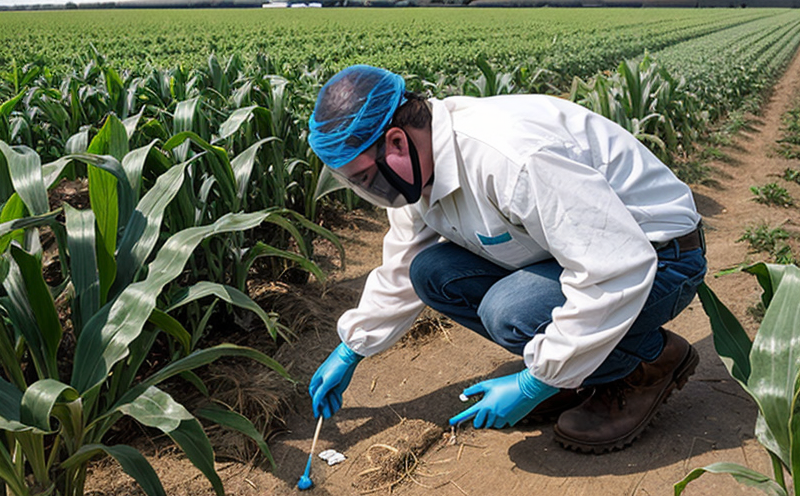Trifluralin Residue Testing in Crops
Trifluralin is a widely used pre-emergence herbicide that controls weeds by inhibiting the growth of young plant roots and shoots. Its extensive use has led to concerns regarding potential pesticide residue levels in agricultural products, which can pose risks if not properly managed. This service ensures that crops meet regulatory standards for trifluralin residues.
The testing process involves a series of steps designed to ensure accurate measurement and compliance with international guidelines such as ISO 17025 and IEC standards. Samples are collected from various stages of the crop cycle, including pre-harvest, harvest, and post-harvest conditions. The laboratory uses sophisticated analytical instruments like GC-MS (Gas Chromatography-Mass Spectrometry) to detect even trace amounts of trifluralin.
The importance of this testing cannot be overstated. Compliance with regulatory limits is crucial for maintaining consumer trust, ensuring product safety, and protecting the environment from contamination. Regulatory bodies such as the EPA (Environmental Protection Agency), EU Commission, and others set specific tolerances to prevent adverse effects on human health and ecosystems.
Our team of experts ensures that every sample undergoes rigorous quality control measures before analysis. This includes thorough documentation of all handling procedures, precise calibration of equipment, and strict adherence to standard operating procedures (SOPs). Post-analysis, detailed reports are generated highlighting the presence or absence of trifluralin along with its concentration levels.
In addition to routine testing services, we also offer customized solutions tailored specifically to meet your unique needs. Whether you require periodic monitoring during specific growing seasons, certification for export markets, or research support for new formulations, our experienced technicians are here to assist.
Quality and Reliability Assurance
We understand the critical nature of accurate pesticide residue testing in crops. Therefore, we maintain stringent quality assurance protocols at every stage of the process—from sample collection through final analysis and reporting. Our laboratories are accredited to ISO/IEC 17025:2017, ensuring that our methodologies meet the highest industry standards.
Our commitment to reliability extends beyond compliance; it encompasses continuous improvement efforts aimed at enhancing both accuracy and efficiency. Regular calibration of analytical instruments using certified reference materials guarantees consistent results across all tests performed here. Additionally, our dedicated staff undergoes ongoing training to stay abreast of emerging trends in the field.
Customer satisfaction is paramount, which is why we provide transparent communication regarding test progress and outcomes via secure online platforms or direct contact methods. Should discrepancies arise, our team works closely with clients to identify potential causes and implement corrective actions promptly.
International Acceptance and Recognition
- The United States Environmental Protection Agency (EPA) recognizes our laboratory for its proficiency in pesticide residue analysis.
- European Commission approvals indicate our compliance with EU regulations governing agricultural chemicals.
- Australia New Zealand Food Standards Code acknowledges the validity of our analytical results for imported goods.
- World Health Organization (WHO) endorsement confirms our role in safeguarding public health through accurate testing practices.
Use Cases and Application Examples
| Application Scenario | Description |
|---|---|
| Pre-harvest Monitoring | Detecting trifluralin residues early allows farmers to adjust application rates or timing if necessary. |
| Compliance Verification | Ensuring that exported crops comply with importing countries’ pesticide residue limits. |
| R&D Support | Aiding in the development of safer alternative pesticides by identifying effective application methods. |
| Post-harvest Quality Control | Evaluating whether post-processing treatments have reduced residue levels effectively. |





